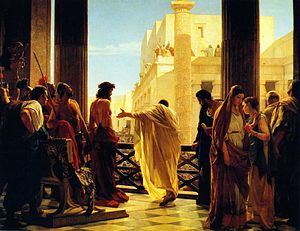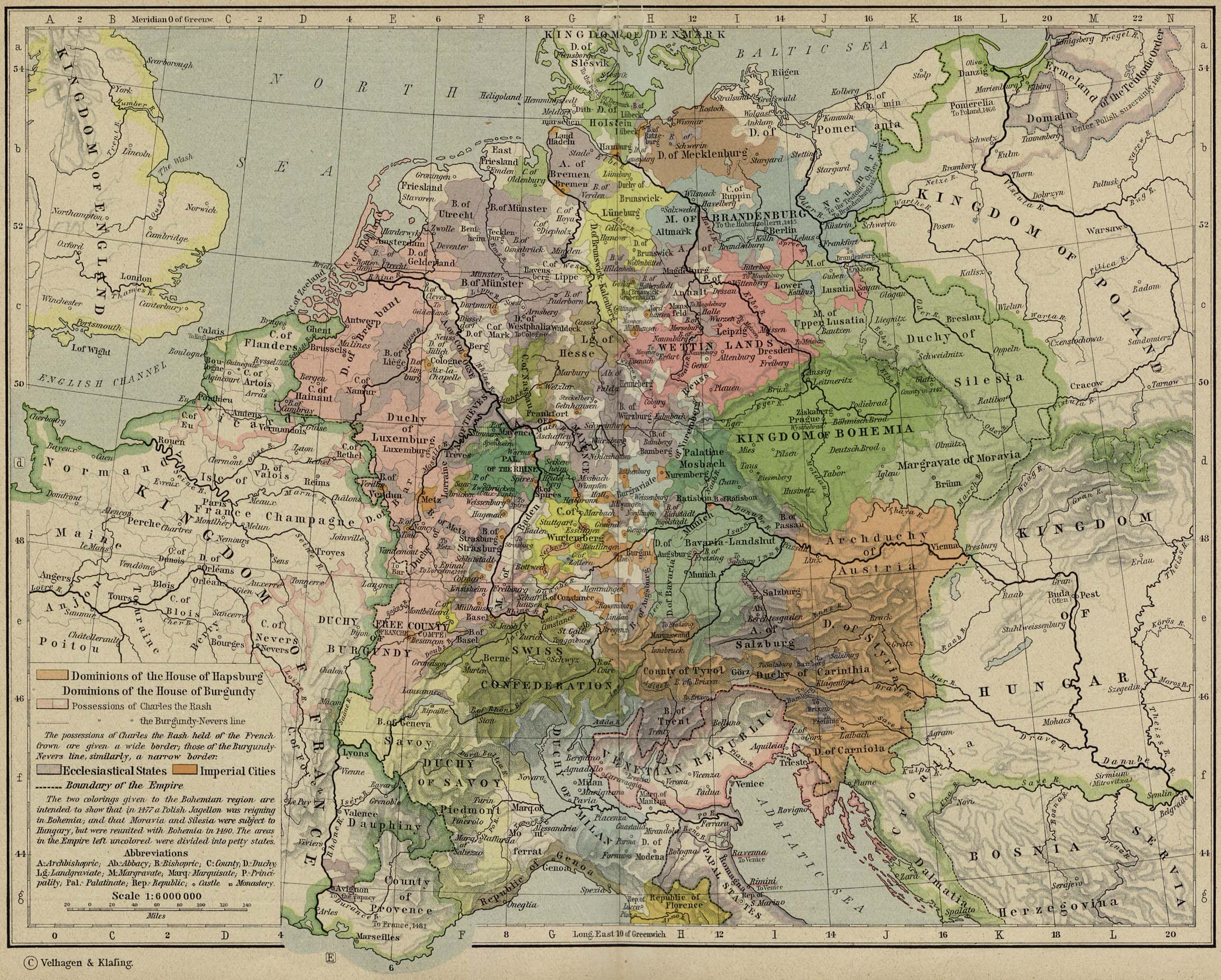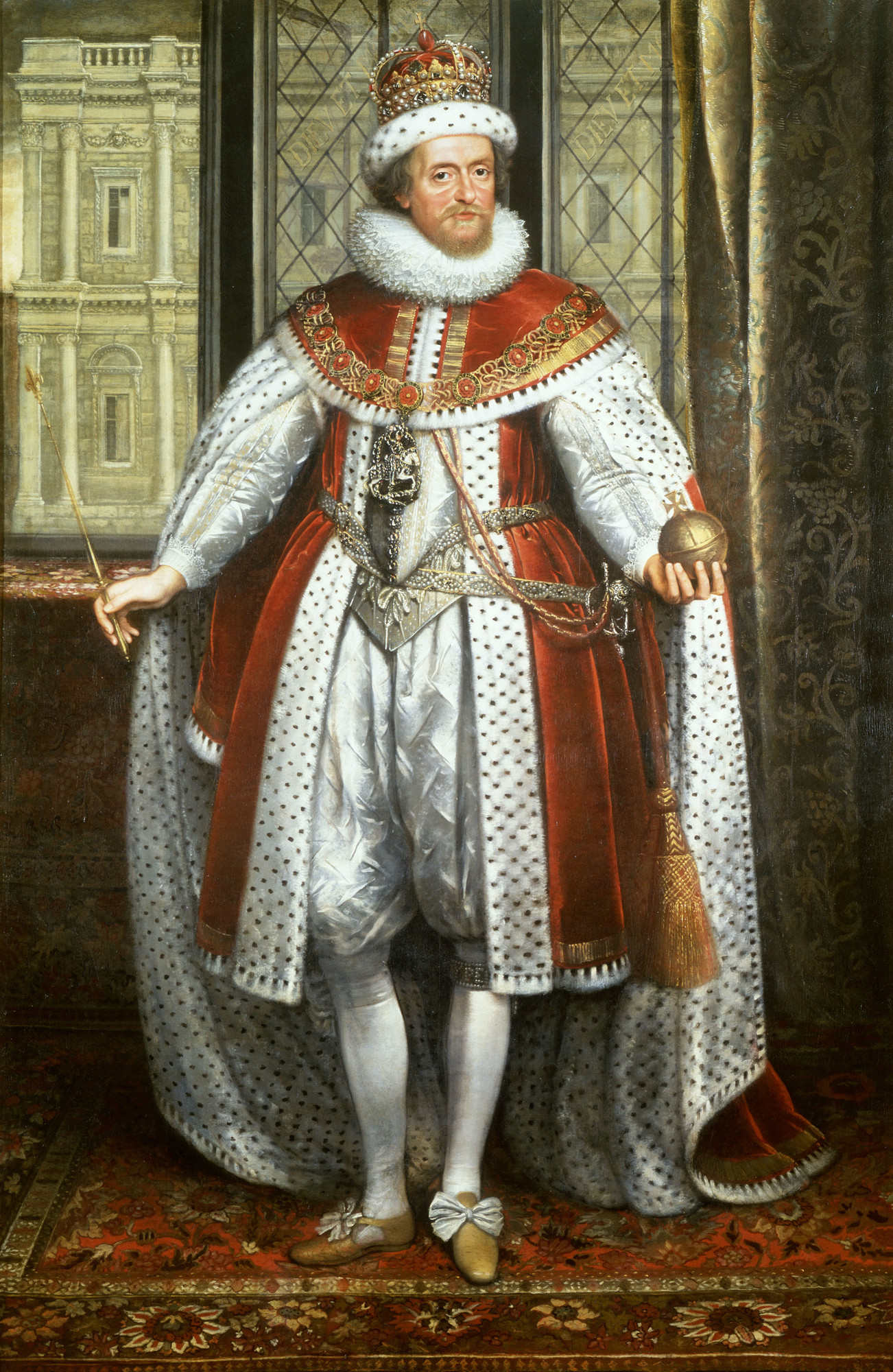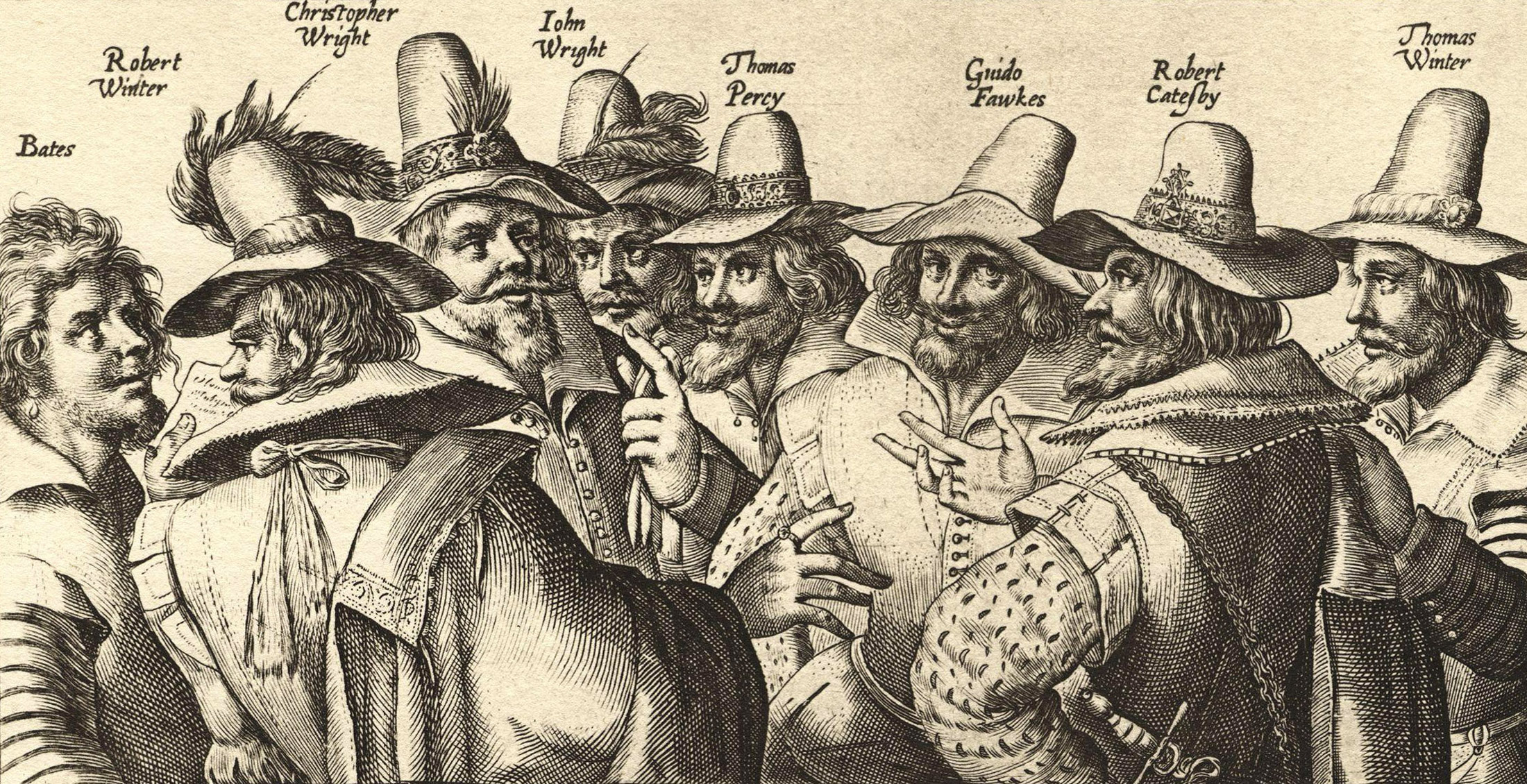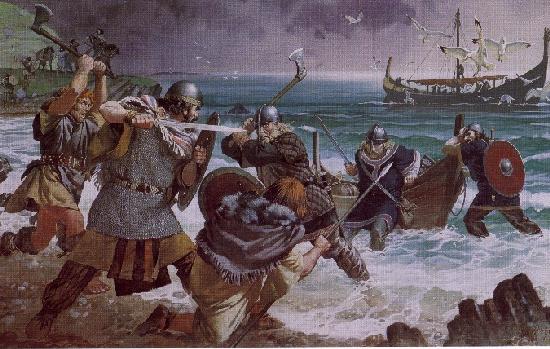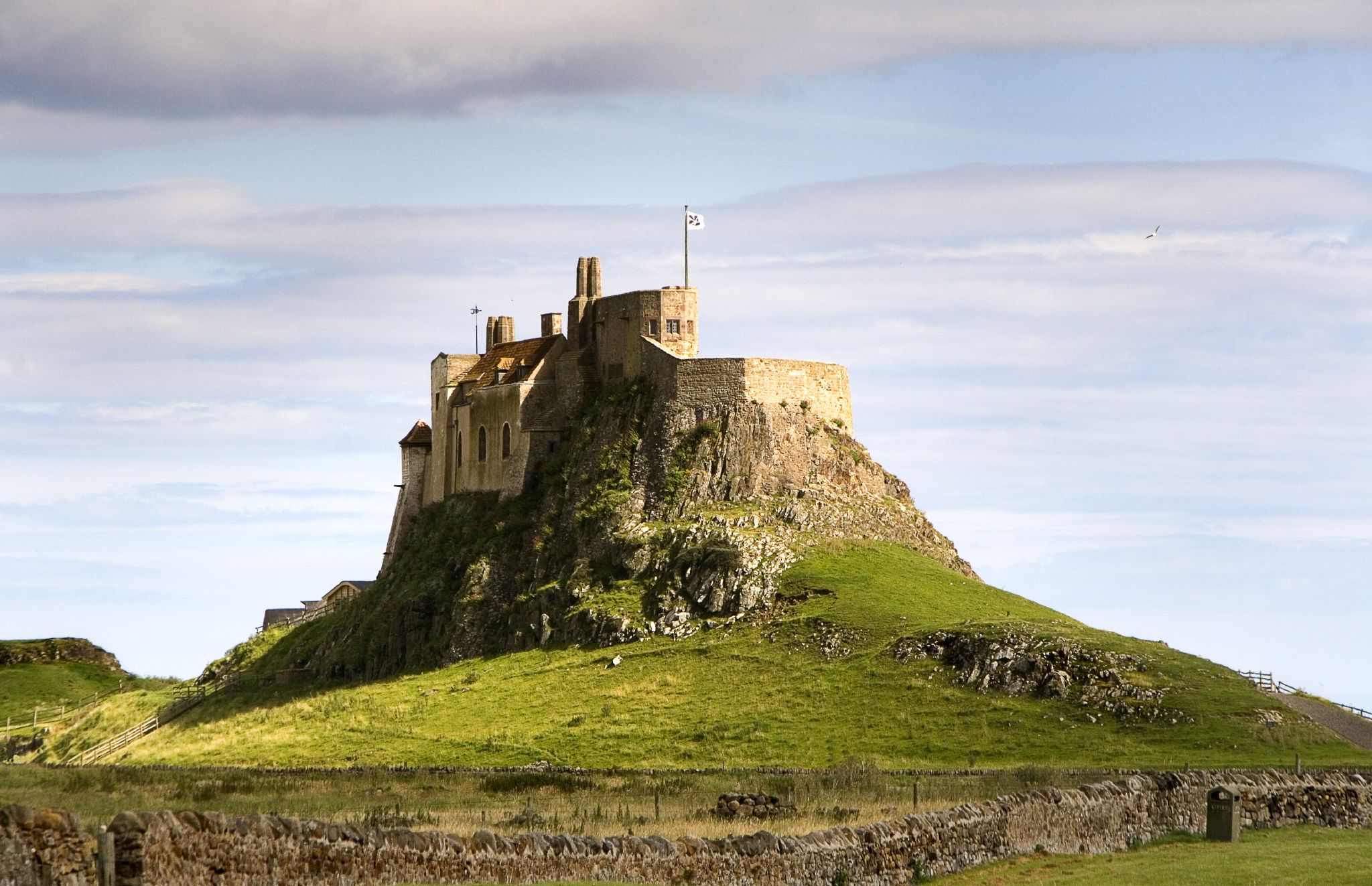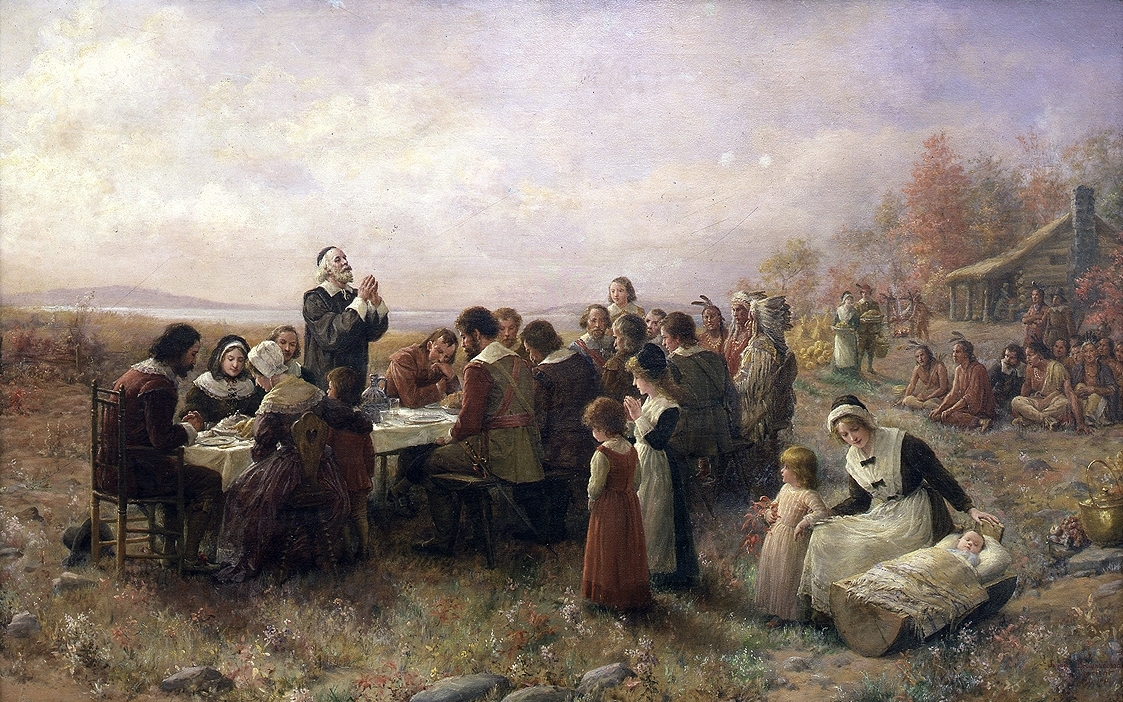 |
| Thanksgiving 1621 |
If we could look back to the first Thanksgiving in Massachusetts, 1621 AD, what would we see? We would see a huge outdoor gathering with tables for eating and fields for playing. The pilgrims from England and the Wampanoag Indians from Massachusetts all gathered to join in a great feast. William Bradford, Myles Standish, and William Brewster were there, as well as Squanto and Chief Massasoit. All day everyone engaged in sports, hunting, playing, and cooking. When it was time to eat, they sat down around the tables to the sumptuous feast they had prepared. Turkey, bread, pumpkins and apples, as well as the three sisters: corn, squash and beans, all had their place. Sour cranberries complemented the turkey and a great assortment of other berries served to color the mound of culinary splendor. However, before the hungry gatherers could dig in, they stopped to give thanks to God for the many blessings they had received. They gave thanks for those who survived the passage from England across the treacherous Atlantic aboard the tiny Mayflower. They gave thanks for the blessing of Squanto, whom God had provided to help the pilgrims through their first winter in the new world. They gave thanks for the Indians who had helped them by bringing them food rather than fighting them. Last, but not least, they gave thanks to God that he had brought them to a new world that was free. It was a new world where no king, pope, prince, or judge could tell them how to live or whom to worship. In this spirit and this knowledge, they celebrated the first Thanksgiving with each other.


